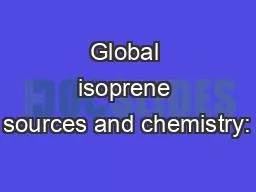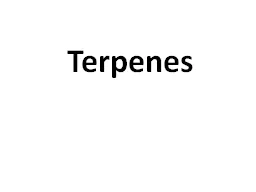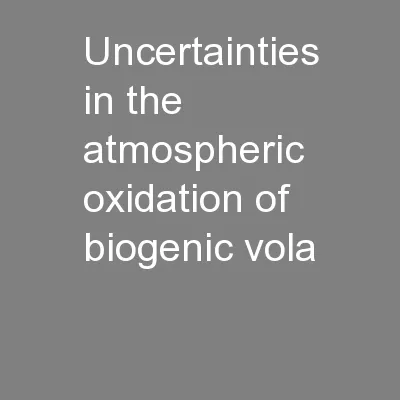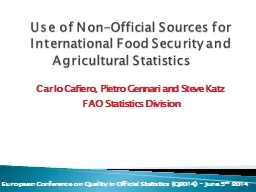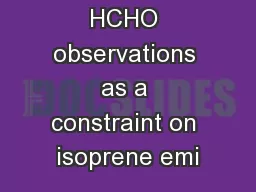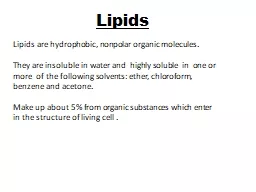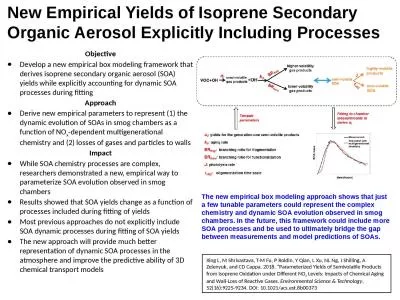PPT-Global isoprene sources and chemistry:
Author : rivernescafe | Published Date : 2020-11-06
constraints from atmospheric observations Daniel J Jacob with Emily Fischer Fabien Paulot Lei Zhu Eloïse Marais Chris Miller and funding from NASA HUCE Volatile
Presentation Embed Code
Download Presentation
Download Presentation The PPT/PDF document "Global isoprene sources and chemistry:" is the property of its rightful owner. Permission is granted to download and print the materials on this website for personal, non-commercial use only, and to display it on your personal computer provided you do not modify the materials and that you retain all copyright notices contained in the materials. By downloading content from our website, you accept the terms of this agreement.
Global isoprene sources and chemistry:: Transcript
constraints from atmospheric observations Daniel J Jacob with Emily Fischer Fabien Paulot Lei Zhu Eloïse Marais Chris Miller and funding from NASA HUCE Volatile organic compounds VOCs in the atmosphere. Courses for Entry into the Doctor of Pharmacy [Pharm.D.] Program 8/2014 Chemistry General Chemistry I with lab - 4 - 5 hours General Chemistry II with lab - 4 - 5 hours a Organic Chemistry I with lab Use to solve. pH = -log [H. +. ]. [H. +. =] = . 10. -pH. . No Brain Too Small . . CHEMISTRY . . Finding –log of a number. Example calculation . -log 1x10. -7. = 7. Calculator displays 7 . 1. History. RA 754 was promulgated on June 18, 1952. Discussions on revision started in 1998.. Bills filed in Lower House. Nereus. Acosta, Angelo . Palmones. , Florencio (. Bem. ) Noel, Sonny Angara, Victoria Noel. | . RONALD FRIEDMAN. ©. 2014 W. . H. FREEMAN . D . COMPANY. Physical Chemistry: Thermodynamics, Structure, and Change. Tenth Edition. ART POWERPOINT PRESENTATIONS. Chapter 1. PHYSICAL CHEMISTRY: THERMODYNAMICS, STRUCTURE, AND CHANGE 10E | PETER ATKINS | JULIO DE PAULA . Terpenes. are a large and diverse class of organic compounds, produced by a variety of plants, particularly conifers,. . though also by some insects. They are often strong-smelling. They may protect the plants that produce them by deterring parasites.. Jingqiu Mao (Princeton/GFDL). Yale University, 02/20/2014. Acknowledgement. Measurements: . William Brune (Penn State), Xinrong Ren (NOAA/UMD). Modeling: . Fabien Paulot (Harvard), Daniel Jacob(Harvard), Ron Cohen (UC Berkeley), Paul Wennberg(Caltech), Larry Horowitz(GFDL). tropospheric . ozone integrating recent model developments. Lu Hu . (. luhu@seas.harvard.edu. ). With. . Daniel Jacob, . Xiong. . Liu, Patrick Kim, . Katie Travis, Lin . Zhang . Acknowledgement: Johan . . European . Conference on . Quality . in Official Statistics (. Q2014) - . June 5. th. 2014. Carlo . Cafiero. , . Pietro Gennari. and Steve Katz. FAO Statistics Division. Background and Context. Role of IOs as Producers of Official Stats . Eloïse. Marais . (emarais@fas.harvard.edu). 1. , . Daniel Jacob. 1. , Jennifer Murphy. 2. , Dylan Millet. 3. , Thomas Kurosu. 4. , Kelly Chance. 4. 1. Earth and Planetary Sciences, . Harvard . University, . Jerry A. Bell. Simmons College (emeritus). American Chemical Society (retired). Wisconsin Initiative for Science Literacy. Energy. Now and Forever?. 2. Connections to Chemistry, 16 October 2013. Energy: Now . Series and Parallel Combinations. Objective of Lecture. Explain how voltage sources in series may be combined.. Explain how current sources in parallel may be combined.. Explain under what conditions voltage sources in parallel and current sources in parallel are allowed.. Data Assimilation and Inverse Modeling. Benjamin Gaubert & Daven Henze. MUSICA Kick-off Meeting 22 May 2019. MUSICA Kick-off Meeting 22 May 2019. Ability to model systems that couple the atmospheric chemistry to other earth system model components including ocean, land, ionosphere.. They are insoluble in water and highly soluble in one or more of the following solvents: ether, chloroform, benzene and acetone. . Make up about 5% from organic substances which enter in the structure of living cell .. Approach. Derive new empirical parameters to represent (1) the dynamic evolution of SOAs in smog chambers as a function of NO. x. -dependent multigenerational chemistry and (2) losses of gases and particles to walls.
Download Document
Here is the link to download the presentation.
"Global isoprene sources and chemistry:"The content belongs to its owner. You may download and print it for personal use, without modification, and keep all copyright notices. By downloading, you agree to these terms.
Related Documents

